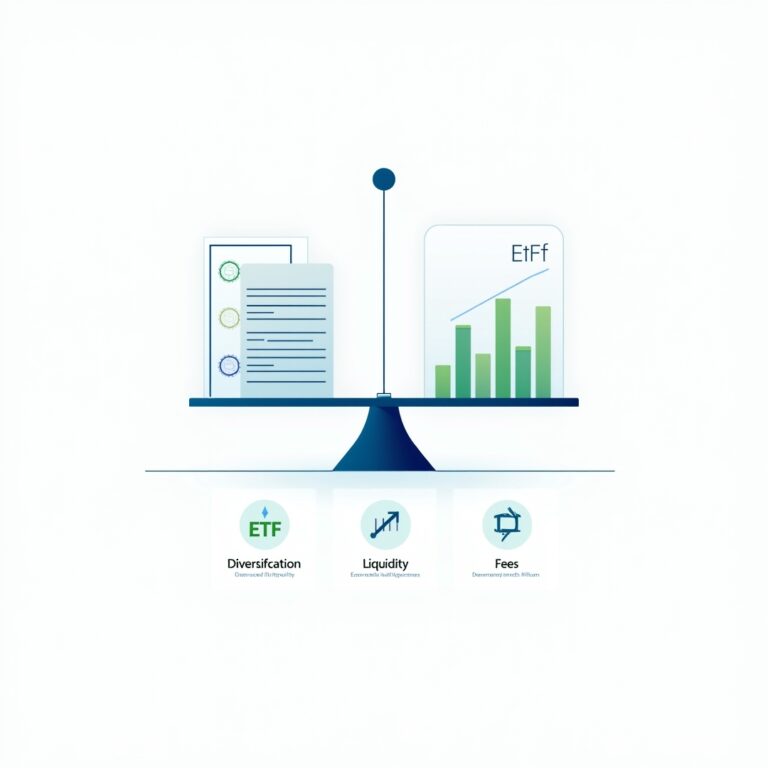Advertisements
Remember that time when I thought a mutual fund was something you shared with your roommate? Yeah, not my proudest moment! Actually, when I first heard about mutual funds at 25, I literally thought it was some kind of joint bank account between friends. Turns out, I wasn’t alone in my confusion – according to a FINRA study, nearly 46% of Americans don’t really understand how mutual funds work!
But here’s the thing – once you get what mutual funds actually are, they’re pretty darn useful for building wealth. Moreover, they’ve helped millions of regular folks like us grow their money without becoming full-time stock traders. So let me break down everything I’ve learned about these investment vehicles over the past 15 years, including all the mistakes I made along the way.
The Basics: What Mutual Funds Really Are

Okay, so basically a mutual fund is like a big pot of money that lots of investors contribute to. Furthermore, this money gets managed by professional investors who buy stocks, bonds, and other securities on behalf of everyone in the fund. Think of it as carpooling for investments – instead of buying individual stocks yourself, you’re pooling your money with others to get professional management.
When I finally understood this concept, it was like a lightbulb went off! Additionally, I realized I didn’t need to spend hours researching individual companies or timing the market. The fund manager does all that heavy lifting for you.
Here’s what really sold me though – with mutual funds, you can start investing with as little as $500 or sometimes even less. Meanwhile, buying individual stocks in a diversified portfolio might require thousands of dollars. This accessibility was gotten by millions of new investors who wanted to start building wealth without breaking the bank.
Types of Mutual Funds (And My Expensive Learning Curve)
Man, did I make some doozies when I first started investing in mutual funds! Initially, I thought all mutual funds were the same – boy was I wrong. There’s actually several different types, and choosing the wrong one can really mess with your returns.
Stock Funds (Equity Funds)
These invest primarily in stocks and are what I started with. However, I went straight for an aggressive growth fund without understanding the risks. Lost 30% in my first year during a market downturn – ouch! Stock funds can be further broken down into categories like large-cap, mid-cap, small-cap, international, and sector-specific funds.
Bond Funds
After my stock fund disaster, I swung too far the other way and put everything in bond funds. While these are generally safer because they invest in government and corporate bonds, the returns were so low I barely kept up with inflation. Nevertheless, they’re great for balancing risk in your portfolio.
Money Market Funds
These are like the checking account of mutual funds – super safe but minimal returns. Actually, I keep some emergency fund money in these because they’re liquid and stable. Though the returns ain’t exciting, sometimes boring is good!
Balanced Funds
Eventually, I discovered balanced funds, which invest in both stocks and bonds. Furthermore, these became my go-to for set-it-and-forget-it investing. They automatically rebalance between stocks and bonds based on market conditions.
How Mutual Funds Actually Make You Money
This part confused me for years, so let me save you the headache. Basically, mutual funds can make you money in three ways, and understanding this is crucial for your investment strategy.
First, there’s dividend income – when the stocks or bonds in your fund pay dividends, that money gets distributed to you. Moreover, you can choose to receive these as cash or reinvest them to buy more fund shares. I always reinvest mine because compound interest is basically magic!
Second, you got capital gains distributions. When the fund manager sells securities that have increased in value, those profits get passed on to investors. However, here’s where I messed up – these distributions are taxable even if you reinvest them, which was a nasty surprise come tax season!
Third, there’s the increase in NAV (Net Asset Value) – basically when the fund’s investments go up in value, your shares become worth more. Subsequently, when you sell your shares, you pocket the difference. This is where most of your long-term gains typically come from.
The Hidden Costs That Almost Nobody Talks About
Here’s something that really irritated me when I found out – mutual funds aren’t free to own! Actually, there’s several fees that can eat into your returns if you’re not careful. Learning about these the hard way cost me thousands over the years.
The expense ratio is the big one – it’s an annual fee expressed as a percentage of your investment. For instance, a 1% expense ratio means you’re paying $10 per year for every $1,000 invested. Doesn’t sound like much, but over 30 years, that seemingly small fee can cost you tens of thousands in lost returns!
Then there’s load fees – basically sales charges that some funds charge when you buy (front-load) or sell (back-load) shares. Meanwhile, I was paying 5.75% front-load fees on my first fund without even realizing it! Now I stick mostly to no-load funds unless there’s a really compelling reason not to.
Some funds also charge 12b-1 fees for marketing and distribution costs. Furthermore, there might be redemption fees if you sell too quickly, account fees for maintenance, and transaction fees. Always read the fund’s prospectus – boring as heck but necessary!
My Simple Strategy for Choosing Mutual Funds
After making pretty much every mistake possible, I’ve developed a straightforward approach to selecting mutual funds. First, I always check the fund’s long-term performance – not just last year’s returns but the 5 and 10-year averages. Morningstar is great for this research.
Second, I look at the expense ratio and aim for funds under 0.5% for index funds or under 1% for actively managed funds. Additionally, I avoid any fund with load fees unless their performance is absolutely stellar. Third, I check the fund manager’s tenure – if they’ve been running it successfully for at least 5 years, that’s usually a good sign.
Most importantly though, I make sure the fund aligns with my investment goals and risk tolerance. Subsequently, I learned that chasing high returns without considering risk is a recipe for sleepless nights and panicked selling during market downturns.
Your Next Steps in the Mutual Fund Journey

Look, mutual funds ain’t perfect – they’ve got fees, tax implications, and you’re trusting someone else with your money. However, for most of us regular folks who don’t have time to become investment experts, they’re a solid way to build wealth over time. The key is starting somewhere, even if it’s just with $50 a month.
Remember, I started out thinking mutual funds were some kind of shared checking account! Nevertheless, with patience and learning from mistakes (hopefully mine, not yours), you can use these investment tools to build a more secure financial future. Just don’t forget to diversify, keep an eye on fees, and stay the course even when markets get scary.
Ready to dive deeper into smart investing strategies? Check out more practical finance tips at Plan Wealth – we’ve got tons of articles to help you navigate your financial journey without all the confusing jargon!


